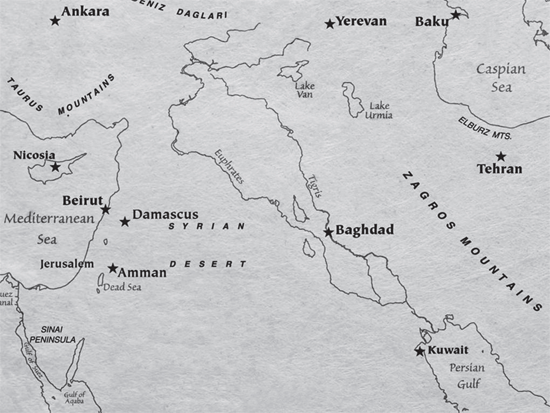Where Was the Garden of Eden Located?
by Ken Ham on August 20, 2013
Most Bible commentaries state that the site of the Garden of Eden was in the Middle East, but what does Scripture actually tell us?
Most Bible commentaries state that the site of the Garden of Eden was in the Middle East, situated somewhere near where the Tigris and Euphrates Rivers are today. This is based on the description given in Genesis 2:8–14:
The Lord God planted a garden eastward in Eden. . . . Now a river went out of Eden to water the garden, and from there it parted and became four riverheads. The name of the first is Pishon. . . . The name of the second river is Gihon. . . . The name of the third river is Hiddekel [Tigris]. . . . The fourth river is the Euphrates.
Even the great theologian John Calvin struggled over the exact location of the Garden of Eden. In his commentary on Genesis he states:
Moses says that one river flowed to water the garden, which afterwards would divide itself into four heads. It is sufficiently agreed among all, that two of these heads are the Euphrates and the Tigris; for no one disputes that . . . (Hiddekel) is the Tigris. But there is a great controversy respecting the other two. Many think, that Pison and Gihon are the Ganges and the Nile; the error, however, of these men is abundantly refuted by the distance of the positions of these rivers. Persons are not wanting who fly across even to the Danube; as if indeed the habitation of one man stretched itself from the most remote part of Asia to the extremity of Europe. But since many other celebrated rivers flow by the region of which we are speaking, there is greater probability in the opinion of those who believe that two of these rivers are pointed out, although their names are now obsolete. Be this as it may, the difficulty is not yet solved. For Moses divides the one river which flowed by the garden into four heads. Yet it appears, that the fountains of the Euphrates and the Tigris were far distant from each other.1
Calvin recognized that the description given in Genesis 2 concerning the location of the Garden of Eden does not fit with what is observed regarding the present Tigris and Euphrates Rivers. God’s Word makes it clear that the Garden of Eden was located where there were four rivers coming from one head. No matter how one tries to fit this location in the Middle East today, it just can’t be done.
Interestingly, Calvin goes on to say:
From this difficulty, some would free themselves by saying that the surface of the globe may have been changed by the deluge. . . .2
This is a major consideration that needs to be taken into account. The worldwide, catastrophic Flood of Noah’s day would have destroyed the surface of the earth. If most of the sedimentary strata over the earth’s surface (many thousands of feet thick in places) is the result of this global catastrophe as creationists believe, then we would have no idea where the Garden of Eden was originally located—the earth’s surface totally changed as a result of the Flood.
Not only this, but underneath the region where the present Tigris and Euphrates Rivers are located there exists hundreds of feet of sedimentary strata—a significant amount of which is fossiliferous. Such fossil-bearing strata had to be laid down at the time of the Flood.
Therefore, no one can logically suggest that the area where the present Tigris and Euphrates Rivers are today is the location of the Garden of Eden, for this area is sitting on Flood strata containing billions of dead things (fossils). The perfect Garden of Eden can’t be sitting on billions of dead things before sin entered the world!
This being the case, the question then is why are there rivers named Tigris and Euphrates in the Middle East today?

Many wrongly conclude that the Garden of Eden was somewhere in the Middle East based on the names of the rivers in Genesis 2.
In my native country of Australia, one will recognize many names that are also used in England (e.g., Newcastle). The reason is that when the settlers came out from England to Australia, they used names they were familiar with in England to name new places/towns in Australia.
Another example is the names given to many rivers in the United States. There is the Thames River in Connecticut, the Severn River in Maryland, and the Trent River in North Carolina—all named for prominent rivers in the UK.
In a similar way, when Noah and his family came out of the ark after it landed in the area we today call the Middle East (the region of the Mountains of Ararat), it would not have been surprising for them to use names they were familiar with from the pre-Flood world (e.g., Tigris and Euphrates), to name places and rivers, etc., in the world after the Flood.
Ultimately, we don’t know where the Garden of Eden was located. To insist that the Garden was located in the area around the present Tigris and Euphrates Rivers is to deny the catastrophic effects of the global Flood of Noah’s day, and to allow for death before sin.



 0 التعليقات
0 التعليقات


